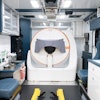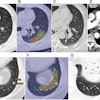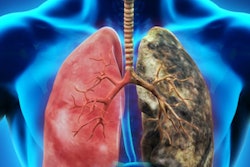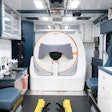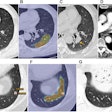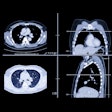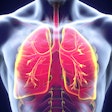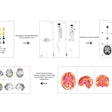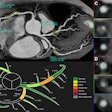A predictive model that combines radiomics, deep-learning, and clinical features shows promise for improving the predictive accuracy of the invasiveness of pulmonary adenocarcinoma presenting as ground-glass nodules (GGNs) on CT, investigators have found.
The study results could support better treatment planning for patients with early-stage disease, wrote a team led by Huairong Zhang, PhD, of the General Hospital of Ningxia Medical University in Yinchuan, China. The group's findings were published October 22 in Academic Radiology.
"The comprehensive model [we developed] … enables reliable prediction of the invasiveness of GGNs-ADC [ground-glass nodules associated with invasive lung adenocarcinoma]," the researchers noted.
GGNs are considered precursor lesions to both minimally invasive and invasive adenocarcinoma, the group explained, writing that distinguishing between the two categories is crucial "as it significantly impacts clinical management and surgical approaches." But differentiating between preinvasive and invasive lung cancer can be challenging, since CT features for the two can overlap.
The investigators explored whether a comprehensive predictive model that combined the following features -- radiomics from noncontrast and contrast-enhanced CT, those from deep-learning, and those from intratumoral habitats (or ITH; these include characteristics such as vascularity, metabolism, and cell density) -- could help clinicians better assess adenocarcinoma.
They conducted a study for which they created eight predictive models (one of which was the comprehensive one) and applied the models to data from 516 patients with GGNs equal to or greater than 30 mm that had been confirmed by pathology between December 2018 and September 2023 at two centers. Center 1 patients were divided into training and internal-validation sets (276 and 120 patients, respectively), while center 2 patients made up an external-validation set (120 patients).
Using data from both noncontrast and contrast-enhanced CT images, the authors performed ITH analysis; extracted radiomics features from particular lesion regions; and used a ResNet50 model to cull deep-learning features. They assessed the models' performance using the area under the curve (AUC) measure, decision curve analysis, and calibration curves.
Overall, they reported that the comprehensive model showed the highest accuracy in distinguishing invasive adenocarcinoma from preinvasive lesions.
Comprehensive model's performance for predicting invasiveness of early-stage lung cancer presenting with GGNs | |||
Measure | Training set | Internal-validation set | External-validation set |
| AUC | 0.92 | 0.9 | 0.85 |
| Accuracy | 84% | 82% | 80% |
| Sensitivity | 85% | 88% | 80% |
| Specificity | 84% | 74% | 80% |
The group also analyzed the comprehensive model using the SHAP (SHapley Additive exPlanations) tool and found that "wavelet-based texture features, deep-learning features, and ITH features made significant contributions to the model's performance."
The study findings are promising, according to the team.
"By bridging imaging and pathology, this model advances personalized surgical decision-making and aligns with radiology’s mission to translate imaging innovation into patient-centered care," the group concluded.
The complete study can be found here.


